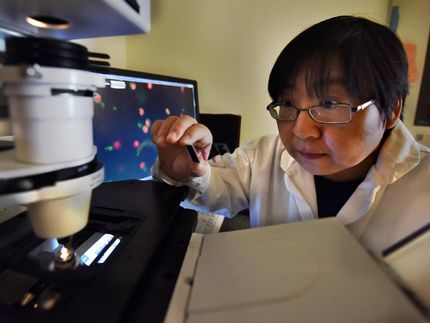UF scientists find clues to aid injury recovery in aged livers, improve transplant success in seniors
University of Florida scientists have identified a key cellular process involved in age-related damage to the liver — and ways to reverse that damage by manipulating genes or administering certain drugs. The findings could ultimately help shorten the national liver transplant waiting list by allowing the use of livers donated by older adults.
“If we can improve the function and health of livers, and increase donations from seniors, then we can significantly improve the success rate of transplantations,” said Jae-Sung Kim, Ph.D., an assistant professor of surgery in the UF College of Medicine, and a member of the UF Institute on Aging, who led the research team.
The liver performs many vital and complex jobs, including turning food into usable nutrients and removing toxins from the body. But just as the brain and muscles lose function as people age, the liver also becomes less resilient. Because of that, liver surgery in elderly patients is often unsuccessful, and livers donated by older adults are frequently unusable because of increased risk of failure or poor function. Recipients who do get livers from old donors often need a new transplant within a year.
Surgery to remove portions of the liver or transplant the entire organ involves the clamping off of blood vessels, temporarily depriving the organ of blood flow and oxygen. Suddenly restoring blood and oxygen after surgery causes stress-related damage known as ischemia/reperfusion injury. Older livers have great difficulty recovering from the injury, whereas younger livers rebound readily. Existing treatments have not made a substantial difference in how patients fare after transplantation, partly because liver injury mechanisms are not well-understood. UF researchers were interested in a process by which the body removes damaged cellular components, and which has a potential role in aging.
In particular, they looked at the clearing away of damaged mitochondria, the energy centers of cells. That helps cells optimize performance in a number of ways, including preventing the formation of toxic chemicals, maintaining appropriate levels of energy production and recycling nutrients. In laboratory studies, Kim and colleagues found that disruption of this cellular cleanup is linked to the inability of aged livers to recover from surgery-related stress. They discovered an age-related decrease in levels of one of the main proteins, called Atg4B, that orchestrates the process.
“This work, for the first time, gets into the mechanism of why livers from older animals are more prone to injury from ischemia/reperfusion than those from young animals,” said John Lemasters, M.D., Ph.D., a professor of biochemistry and molecular biology and of pharmaceutical sciences at the Medical University of South Carolina who was not involved in the study.
The researchers used gene therapy to replenish the depleted protein and observed liver function afterward in liver transplant mouse models whose ages correspond to those of people in their late 20s to early 30s, and in their 80s.
The approach reduced mitochondrial dysfunction and promoted recovery after ischemia/reperfusion injury, boosting the performance of livers from old animals beyond that of normal middle-aged animals. In untreated aged livers, mitochondrial levels were at nearly zero after injury, whereas 80 percent of the mitochondria in treated livers were functional. Cells in the treated livers also were much more resilient; only 30 percent died compared with 80 percent in untreated livers — a more than two-fold improvement.
“This is a new strategy to improve liver function after ischemia/reperfusion injury, which might be important in liver surgery, and in organ storage and preservation for transplantation,” Lemasters said.
Kim and collaborators, including Christiaan Leeuwenburgh, Ph.D., a professor and chief of the biology of aging division in the department of aging and geriatric research and a member of the UF Institute on Aging, hope the findings will make their way into clinical applications. They are now testing various pharmaceuticals to see which can mimic the observed results with genetic manipulation, with minimal side effects.
“The basic mechanisms discovered here will lead to the next step in helping transplant surgeons find tools and ways to spur some of the pathways that are failing, and allow organs from older individuals to be successfully transplanted,” Leeuwenburgh said.
Other news from the department science
Most read news
More news from our other portals
See the theme worlds for related content
Topic world Gene therapy
Genetic diseases once considered untreatable are now at the center of innovative therapeutic approaches. Research and development of gene therapies in biotech and pharma aim to directly correct or replace defective or missing genes to combat disease at the molecular level. This revolutionary approach promises not only to treat symptoms, but to eliminate the cause of the disease itself.

Topic world Gene therapy
Genetic diseases once considered untreatable are now at the center of innovative therapeutic approaches. Research and development of gene therapies in biotech and pharma aim to directly correct or replace defective or missing genes to combat disease at the molecular level. This revolutionary approach promises not only to treat symptoms, but to eliminate the cause of the disease itself.
























































